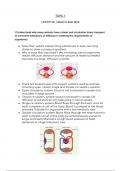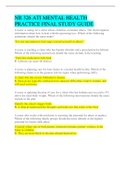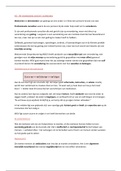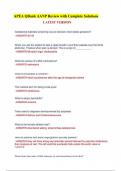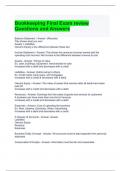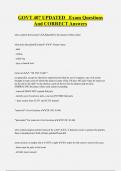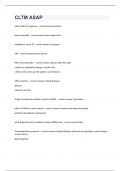Summary
Summary - Unit 1 - Lifestyle, Transport, Genes and Health
- Course
- Institution
These are notes on a level biology edexcel. The are written topic by topic, with subheadings. Also includes the part of the specification. Core practicals are also included. Topics: heart, water, blood vessels, cardiac cycle, atherosclerosis, risks of cardiovascular disease, monosaccharides ect.
[Show more]
